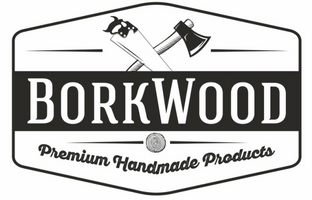How Life Sciences Companies Can Improve Expense Oversight and Compliance?
In the complex world of life sciences, maintaining effective scrutiny and auditing of commercial expenses is integral to assuring compliance with applicable commercial rules and regulations.
With the rapid pace of innovation and stringent regulations, life sciences compliance professionals must prioritize expense oversight as a key component of operational success.
This blog post explores how life sciences companies can enhance their expense management practices by leveraging solutions such as qordata or Appzen expense audit solutions.
This would enable life sciences companies to significantly enhance the effectiveness of expense monitoring and auditing, offering insights, strategies, and more to assure compliance at all levels.
The Current Landscape
Expense oversight goes beyond merely tracking costs; it is about ensuring every dollar spent aligns with regulatory requirements and corporate policies.
Unfortunately, many life sciences companies struggle to maintain this balance.
They often rely on sampling techniques, auditing only 20% to 30% of expense data to gauge the financial health of the organization.
While this offers a snapshot, it leaves room for non-compliance and inefficiencies. This is exactly where qordata or Appzen expense audit solutions enter the fray and change the game (more on this later).
Usual challenges in the industry include discrepancies in expense reporting, lack of real-time monitoring, and difficulties in adhering to dynamic regulatory landscapes. These issues not only hinder compliance but also adversely affect financial health and operational efficiency.
In an industry where margins can be thin, the consequences of poor expense oversight can be significant, leading to lost revenue, regulatory fines, and damage to reputation.
Moreover, with the increasing complexity of global operations and the diversity of regulatory requirements across different regions, life sciences companies face mounting pressure to enhance their oversight mechanisms.
Companies must adopt proactive measures to identify and mitigate potential risks associated with expense management.
Leveraging the Best Practices in Expense Oversight
Adopting best practices in managing expenses is vital for life sciences companies.
One effective approach is to implement automated systems, such as the qordata expense audit solution, which can significantly enhance oversight by providing real-time monitoring and instant compliance checks.
Automation reduces the risk of human error and ensures consistent adherence to guidelines. Another key practice is integrating expense management systems with existing business processes.
This seamless integration allows for comprehensive data analysis, making it easier to identify trends, anomalies, and areas of concern.
For example, by linking qordata expense management with existing T&E systems, companies can gain insights into spending patterns, allowing for better expense monitoring, and auditing of the organization’s spending data.
-
Training for Internal Employees
Regular training for employees on company policies and regulatory requirements further bolsters compliance efforts.
It is essential to foster a culture of compliance within the organization, where every employee understands their role in maintaining expense oversight.
Workshops and refresher courses can keep staff updated on the latest regulations and best practices.
-
Establishing Clear Guidelines
Establishing clear guidelines for expense reporting can mitigate confusion and errors. Companies should onboard a user-friendly and technology-driven expense reporting solution such as Appzen expense audit.
Compliance officers can also clearly outline how they can add value to the organization’s expense management process and help in detecting compliance and non-compliance expenses.
Regulatory Compliance Strategies
The life sciences industry is governed by a myriad of regulations that directly impact expense management. Companies must remain agile and informed to avoid costly penalties. Strategies to ensure compliance include establishing a dedicated compliance team that stays abreast of regulatory changes and liaises with other departments to ensure that policies are consistently applied across the organization.
Regularly updating internal policies is crucial. Regulations are not static; they evolve in response to current information and emerging trends. A compliance team can ensure that internal policies reflect these changes, providing employees with clear guidelines to follow. Conducting thorough audits—both internal and external—can also help identify compliance gaps and rectify them before they lead to significant issues.
Leveraging advanced tools like qordata, which offers AI-powered compliance solutions, can streamline monitoring and auditing processes. These platforms provide detailed insights into global and local compliance functions, ensuring that companies stay ahead in regulatory enforcement. By employing such tools, organizations can automate compliance checks and audits, allowing for more comprehensive oversight with less manual effort.
Furthermore, fostering open lines of communication with regulatory bodies can be beneficial. Life sciences companies should aim to build relationships with regulators, which can facilitate a better understanding of compliance expectations and provide insights into forthcoming changes.
Future Trends and Innovations
The future of expense oversight in life sciences is promising, with emerging technologies poised to revolutionize the industry.
Innovations such as artificial intelligence (AI) and machine learning (ML) are set to enhance compliance by automating complex processes and providing predictive analytics for risk management.
These technologies can analyze historical expense data to identify patterns and predict potential compliance issues before they arise.
As these technologies become more accessible, life sciences companies will be better equipped to handle compliance challenges, paving the way for more efficient and ethical operations.
However, organizations need to approach these innovations thoughtfully.
Implementation requires careful planning, training, and integration with existing systems to fully realize their benefits.
Additionally, companies should keep an eye on the evolving landscape of regulatory technology (RegTech).
As regulations become more complex, the demand for advanced solutions to manage compliance is likely to grow.
Investing in RegTech solutions can position companies at the forefront of compliance management, providing a competitive edge in the marketplace.
Conclusion
In summary, effective expense auditing, monitoring, oversight, and assuring compliance are critical to the success of life sciences companies.
This function would enable compliance officers to ensure compliant business growth, reducing the risk of penalties, fines, and other dire consequences that are associated with non-compliance.
By adopting best practices, leveraging technology, and staying informed about regulatory changes, companies can enhance their financial health and maintain compliance.
Organizations need to act proactively, implementing the strategies discussed in this article, explore innovative expense monitoring and auditing solutions, and strive for continuous improvement of the compliance function.
As the life sciences industry continues to evolve, staying ahead of compliance challenges will require ongoing effort and adaptation to the rules and regulations to gain the trust of regulatory authorities, stakeholders, and investors.







